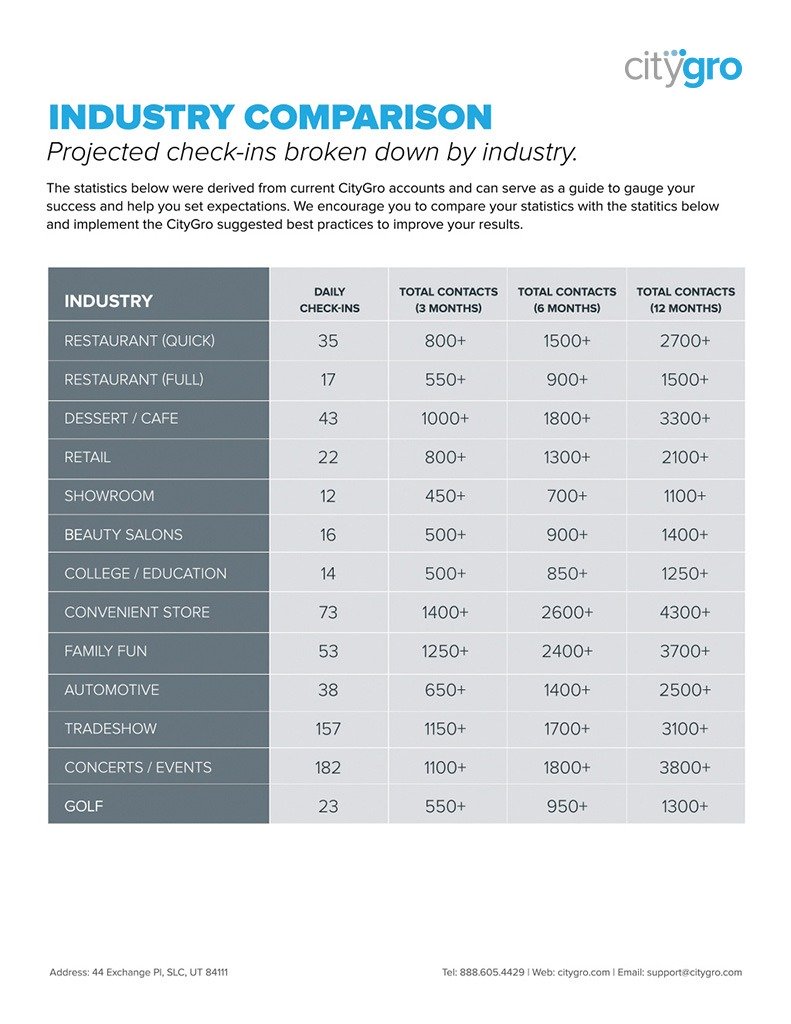Building Your Text and Email Lists- CityGro Live
Building Your Text and Email List Transcript
Hey, I’m Jon Parish. We’re live here from CityGro headquarters in Salt Lake City, Utah. So, happy you’ve joined us. Today we’re going to be talking about building a contact list. One of the fundamental things in retention strategies. And so we’re going to dive into that. Just before we get there, I’ve got just a couple of things or three things I want to make you guys aware of. A number one, if you have questions or comments, please throw them out there at the end of a 10 or 15 minute presentation that we have for you. We’re going to run through those questions. If there are any, you’re also welcomed to direct message us if you have any questions about things related to us specifically.
This content was purposed for all businesses and we just want to clarify that because we had a few people asking us if they had to be CityGro users to get value out of this content. And the answer the answer is actually no, we’re purposely creating content to help any business retain their customers and bring customers back. So hopefully this is useful for you in fact that there is, we do have a, a channel specifically for CityGro users. So if you’re a CityGro user specifically joined that one as well because this one, we’re going to really focus on content available for everyone. And finally, I will give one quick plug and this will be the only plug we give to CityGro. We help thousands of businesses track and bring customers back to their business. And if you want to try out the software, we do a free trial waiting for you at [inaudible]. You’re welcome to head over to the website where you can sign up and give it a shot for free.
With that said, let’s dive into building your contact list. So just a quick note on contact list. So we’re retention marketing company. We’ve helped thousands of businesses with retention, marketing, and the very first thing that we do almost around the clock with every business is we help them grow a contact list. When I say contact lists, we’re talking about emails, texts, a text list, getting data from your customers that are already coming in your store. Those are the ones that we’re focusing on bringing back, obviously. So we start with a contact list to break this down, we monitor three things, the incentive you’re giving to join to our contact list. That’s number one, the placement of where you’re asking for that. And I’ll break that down and then the invitation. So those are the three things we’re going to run through today is incentive placement and invitation.
All right, so incentive, obviously this doesn’t come as a shock to you that people need to be incentivized to offer their information. It’s just habit of humans that we protect our information until you incentivize us to do so. So the very first thing you need to do is you need to decide what your customers actually worth, what’s the lifetime value of your customer. And it’s going to be different whether you’re a restaurant or retail or salon. We focused really heavily on brick and mortar and it’s going to be different to every one of you. But I’ll give you a couple of examples. I remember seeing a. This is years ago when Groupon was just coming out on the market, they reported that they were spending 10 to $20, if not more on every email that they’ve put in their system. They were fake emails and the system truly males in their system, all kinds of different emails in their system.
That might be the case for one business that says, okay, out of emails, I make x dollars. We’re willing to spend that. Now I’m not saying everyone should spend $10 on their email, far from that is, is, is actually what my opinion is. But I do think you should look at your lifetime value and decide what’s worth giving up. What we see more often is I’m going to give away a free drink. If somebody joins my texts or email list or I’m going to get up something small, maybe a discount the very first time they come in for joining. But that’s the first one is we have to incentivize them somehow. Now with that incentive, you can get fairly creative and I’ll give you a couple of examples from businesses we’ve seen. One of my favorites actually came from an ice cream shop in southern California who is using our system to capture phone numbers and they would use current events to really push contacts list.
And I’ll give you an example. This was the time of Superbowl maybe a few years ago and they would run incentives like, who do you think’s gonna win text blue for this team, text read for this team. They weren’t even necessarily running a and said, well, there was an incentive as an enter to win. So you could win x amount of ice cream if you got the right, a right team who won. They built up hundreds of phone numbers and just the week that they ran the promotion just for getting creative and having a way that people could, could, text in to do that. Now, whether you use a text in, whether you use a digital platform like we offer with a, with a kiosk, whether you’re just paper and pencil, there’s a lot of different ways to capture phone numbers, but you need to start or, or emails, so start your contact list, come up with an incentive to do that.
That’s one great way to do it. But again, the standard that we see is just a standing offer for somebody joining a network free drink free cookie, a discount, have some sort of the very first time they come in. What’s your customer worth to you and how much are you willing to do to get that, that contact? Alright, let’s talk about placement. When I talked about placement, I’m not just talking about where you asked, but also when you ask. So, so let’s walk through a customer experience. A customer walks into your business. If you put a sign right at the very beginning that says, hey, sign up for our VIP list, you’ve got to really think through your customer’s mindset is, are they willing to do that? They have enough information? Have they tried your product yet? Have they shopped a retail fedora?
If maybe you’re a salon, have, have they used your product? Maybe not. Maybe way longer. Now take the scenario on the way out. Are they in a rush to get out? Then we actually get most of our signups right at the register. It’s our favorite place to do so on that actually comes with the invitation as well. But thinking in the context of your user, when’s the appropriate time to ask them? Now, not only that, but we’ve seen people who have put their collection box or they’re capturing method, whether it’s a poster or whatnot in a corner. Obviously any traffic to see it. If you’re gonna, if you’re gonna, build that list. So you gotta ask yourself where and when do I want to ask them for, for their lists? I’d also suggest that you maybe look at multi-channel, and I’ll give you an example from a local IHOP here in Salt Lake that we were helping build their network.
They have a waiting room for people to get in. Then they get seated. Well, they have one place. It was a collection box where you could fill out a paper form, put it in the box, and it wasn’t performing like they thought it would, so we put in multiple channels where you walk in, you see a poster that says, here’s the incentive. Joined the VIP club. I think they called it the pancake. A revolution, so you could. You could sign up, put it in the box right there. Well, with the multichannel we have that. We had the poster. We didn’t expect. A lot of people would get it from the poster, but they would at least see that it’s available, so they walk in, they look at the poster so that it’s available. Not a lot of sign up there. They didn’t go to the waiting room.
Now, depending on the business or the restaurant, they either sat in the waiting room, which is where we usually get people to sign up the form then or they get seated right away and a lot of times they’re getting seated right away. So the second channel we had was a kiosk in the waiting room where people could digitally put in their information. And again, if you don’t use CityGro, you could do that with a paper and pencil or a form signup form. They can put their information in there then or they get seated. We also put a table tent, just a quick visual where they could text in to get a registration form. So they would take their phone, they would text, IHOP, or whatever the keyword is. It would send back a link that says thanks for registering, just to know by that, just that far you’ve got their phone number.
You also got what time of day they came in, whether they lunch users or dinner users all just by having them text in. It’s also a great way for consent, which we’ll get into at a later time. But then the form would come back and they could complete more information like email, a name, that kind of thing. So now we’ve got three channels. We have the very first post with a w when we walked in, we saw there a lot of times that didn’t capture them, but it made him aware of it. So they saw the second time in the waiting room. Then most of them were actually filled out at the table. I’m a fourth one that we’ve tested in and I had seen some good results is if you have some hands-on experience, like the store manager coming in and asking them about it, they will say, hey, did you, were you able to join the VIP club?
How do you like it? That’s the fourth contact. So multiple channels definitely drive set up. Okay. I think that covers placement for me and we’re talking about where and when, during placement, not just where it’s at, but when you ask them throughout the time that they there with you. The last one is really key, and we use the eighty 20 rule here is because if you have it, you usually get eighty percent to be. You get 20 percent of your customers that are willing to give you information but as the rule of invitation. Now with the invitation, there are a couple different ways to do that. And notice when I say invitation, I really mean that invitation to join your program, not a sales pitch. You don’t need to train your employees to sell people on it, which you can. There are always incentives for it. In fact, if you provide a good incentive, a brings a natural invitation, but really just having, being perfect at inviting people to join.
And let me give you a couple examples. My favorite way of invitation is systematizing the whole process. So let’s say you have a business, not all businesses can do this by the way, but a lot of them can. Let’s say you have a business that requires an application, maybe like a bounce house or a shooting range or something that requires you to actually fill out an information by putting the contact, authorization or consent directly in that form. Now you can turn your waiver system into a marketing channel, or you can turn whatever process that is into a marketing channel because you’re collecting your list. You’re growing your list through that. My favorite way is if you can find some kind of process that requires them to insert it or at least answer the question. They don’t always say yes, contact me, but they have to answer the question, yes or no.
That’s my favorite way. The second part is more training, optimizing for training. And you’ll notice big box stores are really good at this. I’m local to us, Staples is really good. Ace Hardware’s really good at this. We’re, you know, every time you go through the line, they’re asking you what your phone number is. Again, they’re not pitching you on, hey, you have to give it to us. They’re just asking you, and by nature of asking a, you’re going to get a lot of people that say, yeah, sure I’ll connect with you. So it’s simply an invitation and again, if you just left something on the counter or a poster, I expect to see at most 10 or 20 percent of people participating, if you make it certain that every, employee asks and invites people to participate with your VIP club or your loyalty club or your texts list or email list, I, it’s not, it’s not rare that we see upwards of 70, eighty percent of people are opting into those.
So make sure you give him the invitation. Alright, so we’ve covered really the building blocks of building contacts, lists, making sure there’s an incentive, uh, making sure you’ve got the right placements and invitations. If you do those three things, I, we guarantee that you can build your list and will be really effective for retaining customers in your business. All right, so we’re done. We’re at a point where I’d love to see if we have any questions. We’ve got Derek behind the scenes over here going to help us with those. What do you got there?
Okay, great question. Great. Great. So, so retail, again, it goes back to these three things, but you have to look it with, with the focus on a retail business. Right? So when retail, we’ve seen a few, I would really suggest multichannel. I really liked the incentive. It was actually the one, the one that example I gave was from, I was from a restaurant is from an ice cream parlor who used which team do you think is gonna win text in to get the winter? So, in that case, they had two keywords, let’s call it the blue team and the red team, what they did is they say it was during a big week like playoffs or this next month you have march madness. Might be a really cool time to, to build your list, but you see what’s going on in the current events. You choose a couple of teams and you sit in, you and you build those two keywords and then you create a buzz around it.
You can even put this out on social media, in-store posters, whatnot. Once you have the key that’s really cheap to, to execute this, then you say, Hey, when a $20 gift card or a $50 gift card, you could probably A/B test with your customers to see which is going to drive them, but have them text, you know, if you think the blue team’s gonna win, Texas blue, if you think the red team’s going to win, Texas, red will text you the winter after the game and you’ll be entered to win a gift card. So that’s one idea. Again, if you can get something at the point of purchase, specifically in a retail environment where somebody comes up and maybe it’s a small add-on that doesn’t cost you a lot to give away, but they get it. Only a third part of the text list. The CityGro users can go, can use things like our digital kiosk. If you notice that you’re a user, you can use like fill out the form in any way you can get it at the register. The nice thing about the register is you can also extend that invitation right there, works really well. Hopefully, that helps in your retail environment. Really just go through this list of incentivizing a placement invitation with regards to your, Your Business and your industry. And some of these ideas might come about
march, how many contacts you typically will get added over time. It’s like, what’s the average?
Yeah, good question. So on that note, if you’ll write in to us, we actually have a document that we can share with you by industry, how many we see, but I would really focus on getting half or more of your customers that come through the door to join the list and you’re going to do that by executing these three things. It’s not uncommon for us to see in the first two to three months a list per location list of, of, of a thousand plus. I’m really excited if I get a a single location, that’s, that adds 500 people to their network in the first month. That’s our benchmark of if you’re doing awesome. I think you’re doing really good if you’re in that two, three, 400 range. A lot of it depends on, on traffic that’s coming through. Obviously, some businesses are hiring traffic than others, but you should definitely be seeing several thousand your first 12 months of doing business.
Awesome. We have, we have one more it looks like from Derek, etc. How do you know how to get your customer’s consent before sending them any sort of text message? Promotions?
Yeah, it’s a great question. In fact, I should hammer on that a lot more. The worst thing that you could do is build this phenomenal list that, that the text list or a phone number, list or email list and then realized that you didn’t get consent to, to reach out to you. In fact, we will have a whole lot of, of, of, videos related just to this. We have a few blogs about it, but consents the name of the game, especially with new regulations and text and email marketing. You’ve got to have consent and in our opinion, it’s just the best practice. There’s a lot of spam that goes out there right now. Our goal is not to spam people, it’s to be as relevant as possible consensus with the way you do that. So I would start with a check, a checkbox.
There are some best practices and some regulations that you want to put specifically on your, your signup forms for text marketing. you can get that on CityGro. If you google city road tax regulations, you’ll see a blog post that has all of this pulled out from you. Otherwise, there’s other sources that you can get it, but that’s an easy one that I know have. Make sure you get it. It’s a whole lot easier to get it now. Then get a thousand numbers in your database and realize that you didn’t ask permissions for that. Cool. Yeah. Yeah. We’ve got one more question from Claire, what types of the text offers to drive customers in our offers are not bringing anyone in. All right, good question. That’s a good question. And you’ve also got to consider kind of the goal. So we have some campaigns that are directly related to awareness of campaigns where your whole goal is to create awareness, maybe a new product or new flavor.
If it’s a food place, the ones that drive the most, it’s hard to say. I hate to go back to the answer being ab tested on what we’ll do when we set someone up on CityGro, is we look at for standard campaigns, we try to make them really relevant to the business. So when somebody comes in, we’ll use a bounce-back offer. The very first time they come in, they’ll come in, send out almost immediately and say, thanks for coming in, come back within seven days and get x, y, z. What we find is really successful is at the end of the seven days, I don’t expect a lot of people that have come in unless I send them a reminder texts, on that seventh day that says, hey, just so you know, last day to get this, if you can use the word free, what we see our redemptions go up, even if it’s buy one, get one free or buy two, get one free.
Try to use that word free in there. That really, really makes a difference. That reminder texts, now you’re going to have to send out to because you got the initial one. Then on the last day, you have just a reminder. It’s really nice if you can get that to people who didn’t use it already. Some platforms that you do that, some do, some don’t, but getting really irrelevant. So that’s the first one we do. The next two actually that we do are all about timing and this is all in the name to get relevant messages to people. The more relevant, the higher the percentages will do. A two week offers is pretty standard for us where if we haven’t seen you in two weeks, automatically go out, you’re going to go up on if you send me at the same time that they came in originally.
So for example, if you’ve got my phone number at lunch, probably tells you I’m a lunch customer. Let’s say that I work an hour or I commute to work and I only shop at your store or use your product or visit your salon on my lunch break. Well, you can send me a text at night all, all day long. I’m probably not going to use them unless they’re, they, they hit me around the time that I came in originally. So the next to the two that I’m talking about, our relevancy based on the time you came in, if we haven’t seen it back, will you ever your promotion. It’s been awhile since we’ve seen you back. We’ll increase the promotion. So that really helps. And then the last one we do is really a request to get more info. And these are the standard ones.
There’s a lot of others, ones that we do. The request for more information is usually we try to optimize. I edit like different time periods after they come in. Let’s say I came in and I leave and I get a text while I’m driving and that tech says complete this form for a for free birthday discount or whatever. Maybe it’s the birthday club form. If I’m driving I probably put in my pocket and I don’t remember it. So we’ll start one up to go at a different time the next day. If you didn’t click the foreman, and again this is one that takes a third-party technology like CityGro or others that allows you to track what’s happening, but if you can get really relevant on time, did they use the last message? Some People respond to different incentives, so if you get really, really relevant based on what you sent the time, your chances of getting redemptions go up.
Yeah. Have another one. If you have some contacts with just text information and ideas with emails, how often she contacted them and should be sent to both.
I’ll definitely send to both because it’s just so hard to say. There are some people respond really well to email alive. This goes with age demographics, so the answer might change with, with respect to how often do I send text versus email with what age my demographics, my list contains up. You definitely want to be sending both. And the nice thing about that is you can kind of watch and see who were responsible. So if I send out a thousand texts in a thousand emails and I see the majority of people in Texas, maybe I had 50 people respond to my texts and three people respond my email. Well, naturally I would think text works better. But if I can send four emails for the cost of the text or five emails to the cost of the text and people aren’t opting out, then I’m going to send a text, with my emails, I’m going to send both of them and I’ll probably do two to four texts in a month, but I might do four to eight emails. So send bull track results on both sides. If your system allows you to if you’re sending from the same system, which a lot of people sent from two different systems, so it’d be a little bit harder, but you can group people by what they responded to in a lot of systems. So can both, if they clicked on your email, group m is your email cluster if they if they’re responding to text group, I’m accordingly. Thanks for being with us again. We’re live here at CityGro. We’ll be live again next week. Okay. Thanks.
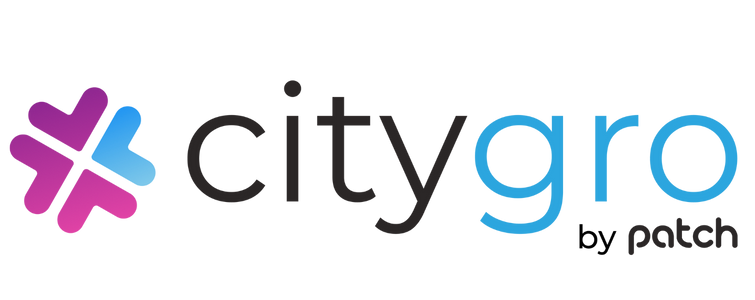

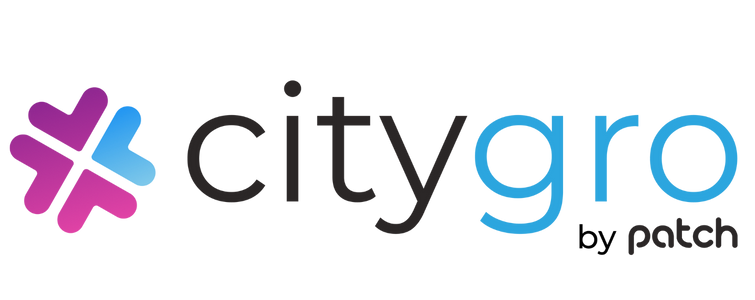


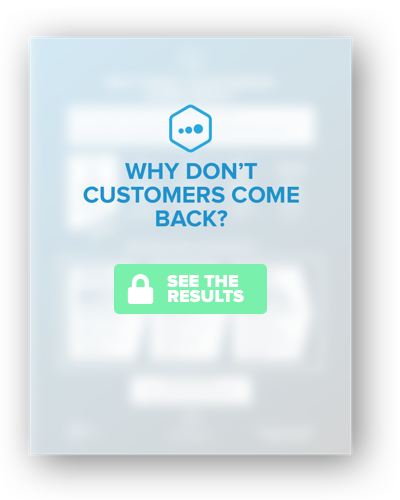
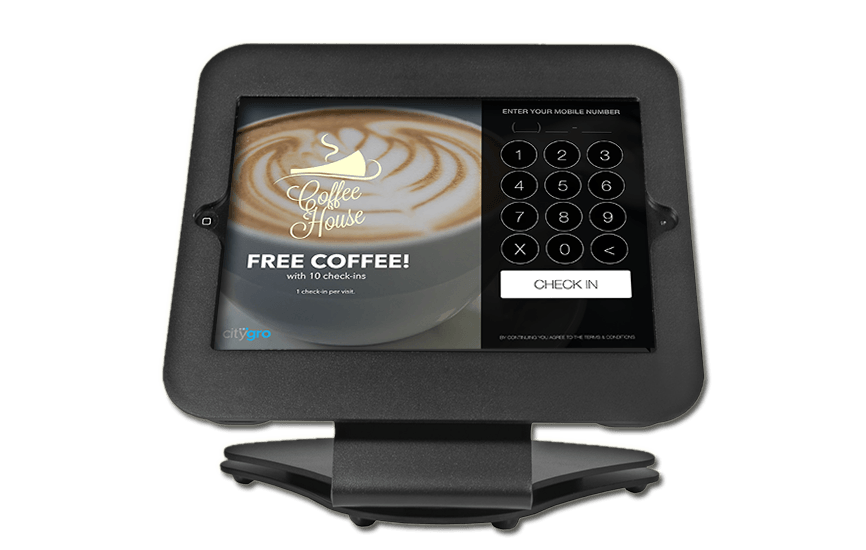 Get this section from Jon. Get this section from Jon. Get this section from Jon. Get this section from Jon. Get this section from Jon. Get this section from Jon. Get this section from Jon. Get this section from Jon. Get this section from Jon.
Get this section from Jon. Get this section from Jon. Get this section from Jon. Get this section from Jon. Get this section from Jon. Get this section from Jon. Get this section from Jon. Get this section from Jon. Get this section from Jon.
